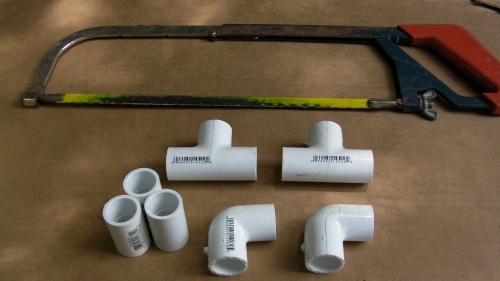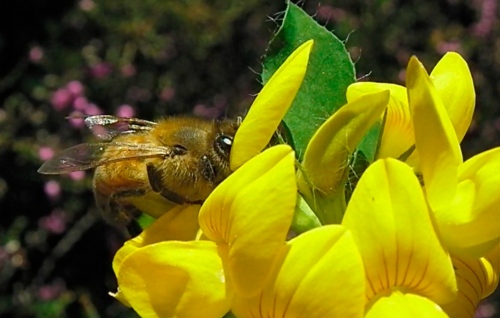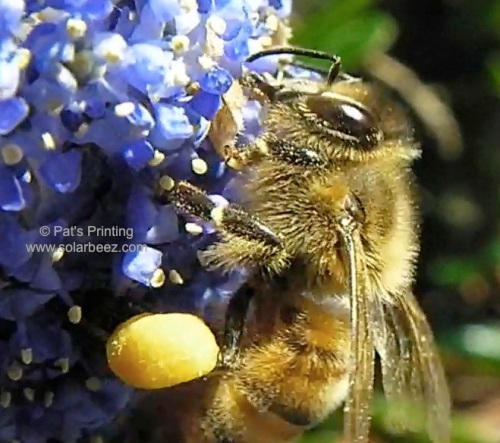
June 1, 2013…Squash and corn area with PVC water grids.

July 6, 2013…Squash and corn growing well after mulch added to keep soil from drying out.

July 24, 2013…Squash and corn bed. Corn is starting to tassel..
Despite the fact that the Oregon Coast gets about 60 inches (1500 mm) of rain a year, we still are very frugal about watering. Overhead sprinklers not only waste water but can invite plant diseases. We’ve found drip watering works well…but how do you water squash which is spaced so far apart? Over the years, we’ve developed a method that gets the job done with a little effort at the beginning of the season. It’s as easy as playing with tinker toys.

PVC can deliver straight to the customer…but these connections are the screw-in type that I started with about 15 years ago. I’ve since graduated to glue-less slip-ons…cheaper and easier to work with.

This glue-less connection can swing in any direction for the water hose connection.

You don’t usually need a water pressure reliever, just turn the shut-off valve on your hose if the pressure is too high.

The garden hose adapter slips on the length of PVC. Use the thin-walled type of PVC because you’ll be drilling holes in it and it doesn’t have to hold pressure.

Tees, couplers, and ells, are just about all you need besides the hacksaw and 10 foot lengths of the thin walled Schedule 20 pvc.

You can economize by sharing a hose connector between two grids.

Need new holes, just drill where you want it…be careful though, it’s a little tricky getting the bit to stay put on a round surface. Don’t hold it in your hands or on your lap. If you slip…well, you get the picture.

Too many holes? Wind electrician’s tape to block off extra holes in unneeded places.

Need to get over to top of a raised bed? With the slip-on connections, it’s much easier.

Don’t be tempted to plant first and then figure out how to water it…it takes more work like this one, a real mess. My SO was in a hurry to get the seedlings in.

July 5, 2013…I’m trying a new compost tea. It’s made from soaking chopped-up comfrey leaves for three weeks. I’ve added it to the right row of corn only for comparison…it sure smells bad, if it doesn’t work I’ll know why. Footnote…my wife doesn’t think much of it.

An example of drip water PVC that DIDN’T work. I tried this on the Hugelkulture bed…back to the drawing board.

Drip watering potatoes…I space the potatoes at 9″ apart. The holes are drilled in the pvc at that distance. This stick is the length of all my potato beds. When I finish with one, I can move it to the next row. I use it year after year, but you know, you have to rotate your crops. Don’t follow tomatoes with potatoes, or potatoes with potatoes for at least a year, preferably two.

This is how I water all my tomatoes. You space the holes where you want the tomatoes, lay the grid in the bed, plant where the water drips out.

The start of our winter lettuce…This year I’m determined to grow enough for the winter…might be a tad early though.

July 28, 2013…time to thin lettuce and turnip greens. I had to get the deer net up, the deer are hungry, and we are on their dinner route.

July 28,2013…This new fawn was frisking around. I was able to catch it (on camera) by waiting it out. It’s momma was showing it where the best places to eat were.
Read Full Post »





















































